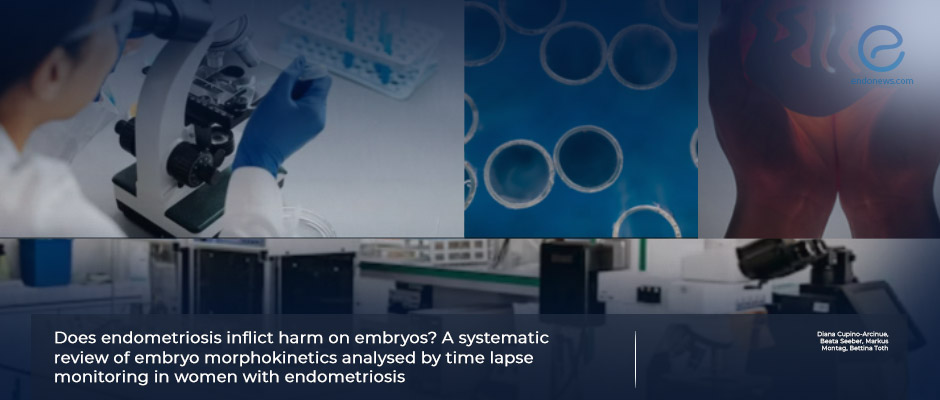Embryo Morphokinetics of Endometriotic Patients by Time Lapse Monitoring
Dec 28, 2023
The success rate of assessing morpho-kinetic parameters of an embryo under TLM in women with endometriosis.
Key Points
Importance:
- Embryo selection using time-lapse monitoring as a standard practice of ART is controversial.
- Some research advise its usage because of higher live birth rates and lower early pregnancy loss, while another recent meta-analysis showed no statistical change.
Highlights:
- Overall morphokinetic parameters of embryos from endometriosis patients are worse when compared to controls, independent of the severity of endometriosis.
What's done here:
- A group of researchers from different countries conducted a literature review to evaluate whether embryo morpho-kinetics assessed by time-lapse monitoring are suitable for predicting blastocyst quality, implantation rate, and pregnancy success in women with endometriosis.
- Comparisons and qualitative evaluation were made based on 5 eligible studies.
Key Results:
- Above 5 studies presented data from 889 women; almost half were diagnosed with endometriosis laparoscopically or sonographically, other half served control group for comparison.
- The morphokinetics properties of 5535 embryos from the included studies were analyzed by time-lapse monitoring.
- The results of the first, second, and third embryo cell cycles of the women with endometriosis were similar compared to those of the control group.
- The percentage of good-quality embryos was significantly lower in the endometriosis group compared to the controls.
- Four studies noted higher pregnancy rates in the control group. Implantation rates and miscarriage rates did not differ between the two groups.
Lay Summary
Many studies showed adverse effects of endometriosis on oocyte quality due to increased apoptosis and dysregulation of molecular pathways related to the development and growth of granulosa cells resulting on developmental arrest in embryos of women with endometriosis.
Time-lapse monitoring is a new technology that continuously analyze embryo development by serial image acquisition hence enables embryologists to select the highest-quality embryo during an IVF procedure.
A group of researchers from Austria, Germany and the Philipinnes decided to make a systematic literature review to determine if time-lapse monitoring is suitable for predicting oocyte quality in women with endometriosis. All the cohort, case-control, and observational studies written in English and containing a control group were included.
There were no differences between endometriotic women and controls in the first, second, and third embryo cell cycles, but the embryo quality was poor in patients with endometriosis. The miscarriage rate after implantation tended to be the same in both groups. Interestingly, the adverse impact of endometriosis on embryonic development is independent of the severity of the disease.
As a result, one can say, "endometriosis primarily decreases the quality of oocytes, but when fertilization occurs, the pregnancy outcome and live birth rate are similar to controls."
This review was published in December 2023 issue of Archives of Gynecology and Obstetrics.
Research Source: https://pubmed.ncbi.nlm.nih.gov/38063893/
time lapse monitoring oocyte quality morpho kinetic parameters embryo cell cycles infertility ART IVF live birth rate endometriosis

